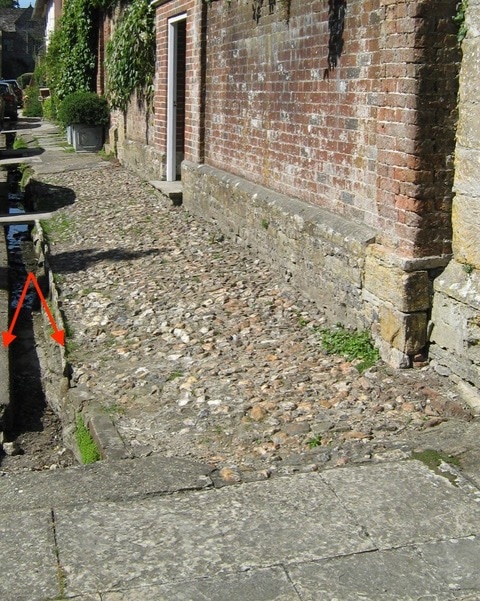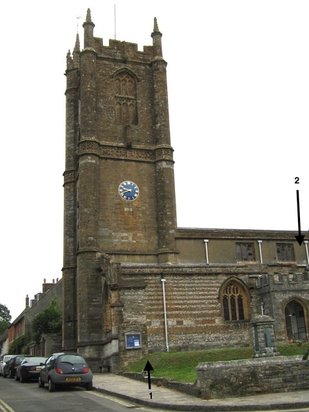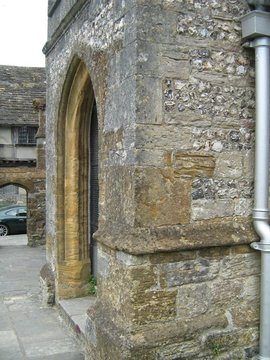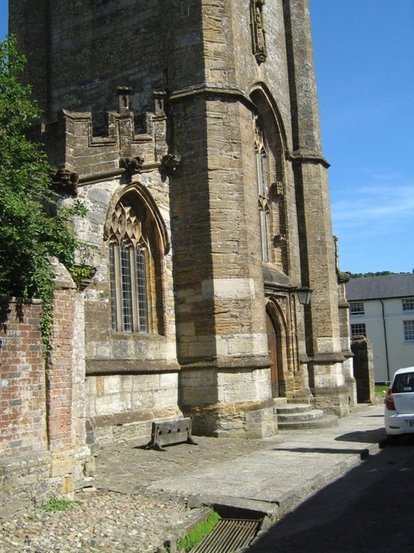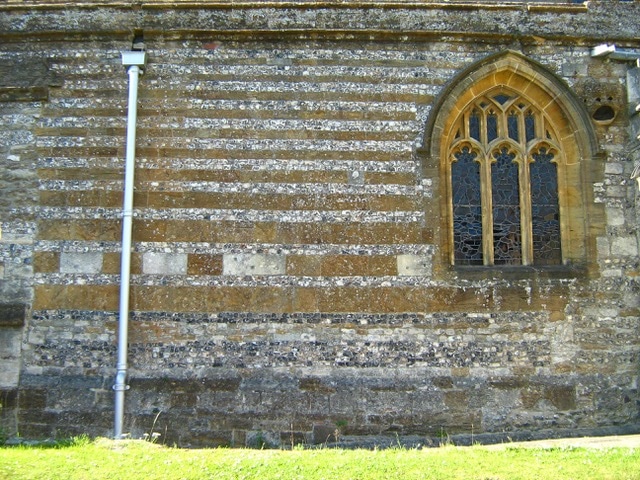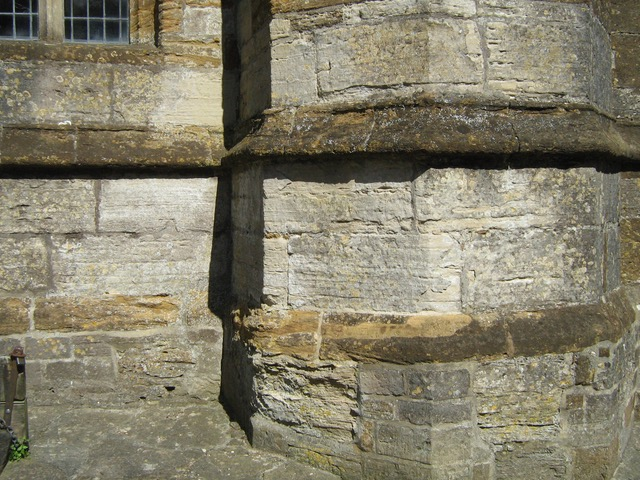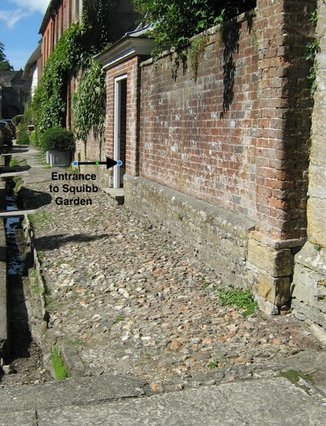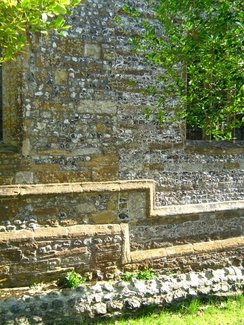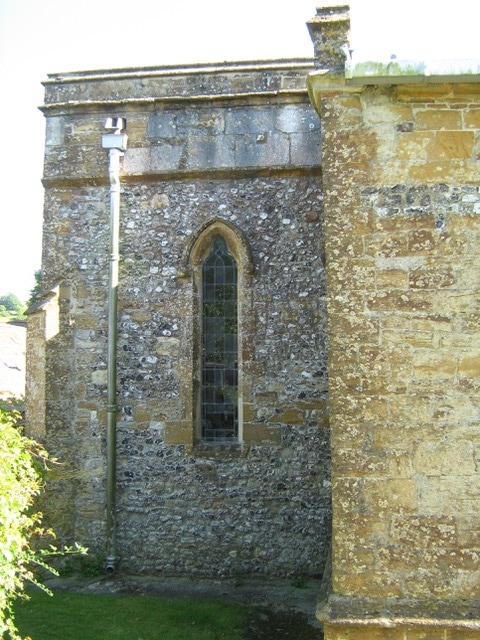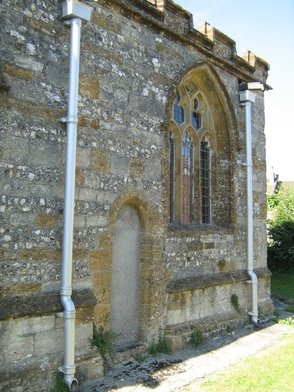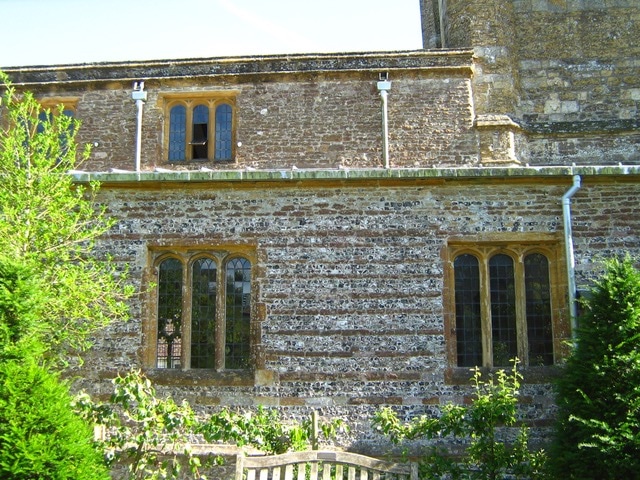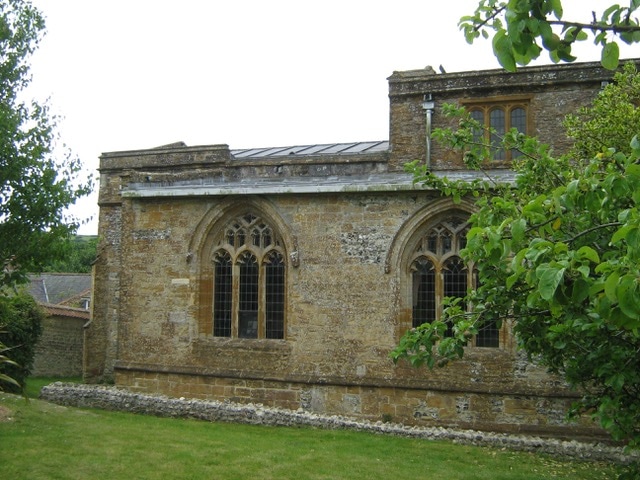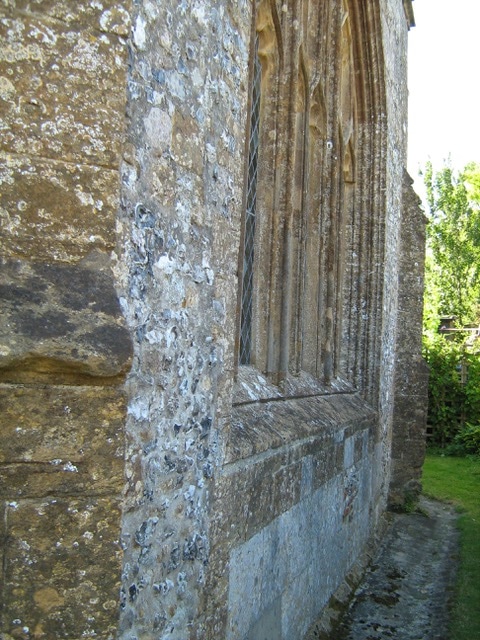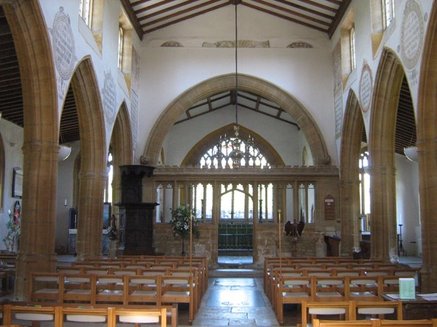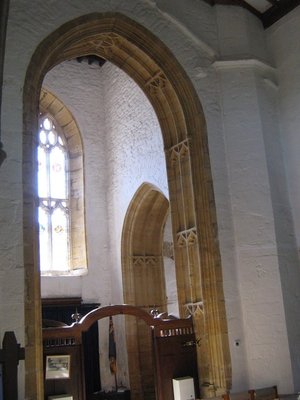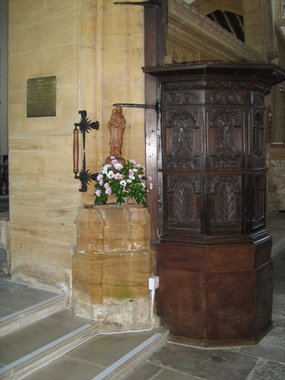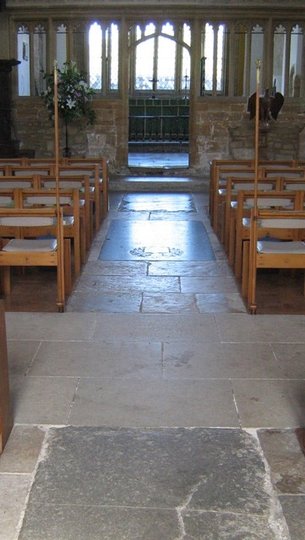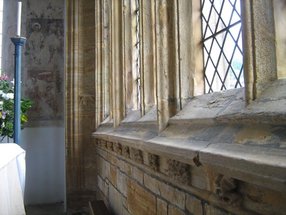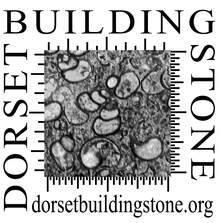The Parish Church of St. Mary, Cerne Abbas.
Grid Reference: ST662012, 36659 101213, 50.8095 -2.4755.
(Lead author: PJB and all photos by PJB unless otherwise noted)
|
The monastery of Cerne Abbey was founded in 987 and built on the Zig Zag Chalk beds of the north Dorset downland, so without good building stone immediately to hand. The Abbey church, of which nothing remains standing, was used also by the villagers whose lives were in most respects controlled by the Abbots until the dissolution in 1539. Towards the end of the 13th century however, the now well-endowed Abbey constructed, a little to the East of today’s Abbey Street, a very modest flint-built village church of St. Mary for the villagers’ own separate use.
All the Tudor internal improvements were of Ham Hill stone from near Montacute in Somerset some 20 miles away. The original stonewalling, replaced by the columned arcades, was re-cycled to build the outer aisle walls, as has been the custom. This rebuilding also significantly increased the use of another stone closer to home - the white Ridgeway (Lower Purbeck) limestone or Cypris Freestone from the Dorset Ridgeway quarries. The nearest of these quarries, at Poxwell, was owned by Cerne Abbey and a string of quarries have since worked this stone as far west as Portesham.
|
The original north and south chancel walls of this 13th C. building remain in position as the oldest part of the present church structure. Major expansion occurred in the mid 15th C. with addition of the contemporary arcades and north/south aisles that remain unchanged today and in effect doubled the interior floor space of that time. This was notably achieved by also replacing the original chancel west wall archway with an open pierced rood screen.
Early in the 16th C. the nave and aisles were extended to the Abbey Street pavement with addition of the West Tower and which until quite recently, were abutted by trader’s buildings, including a shoemaker’s business, opening onto the street. This monastery roadway first served the locked and monitored South Gate to the Abbey. For over 1,100 years since, it has seen the Abbey tradesmen’s homes; the farmer’s wholesale centre and village market place alternately thrive and decline. Fresh running Abbey lake water, considered much safer than from the river, has flowed down the eastern kerbside through a now mixed Purbeck stone open channel. Ignorance of or a realisation of health consequences led to the 19th C. village name for it as: ‘Blood & Guts Lane’.
|

